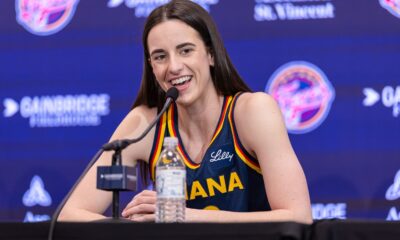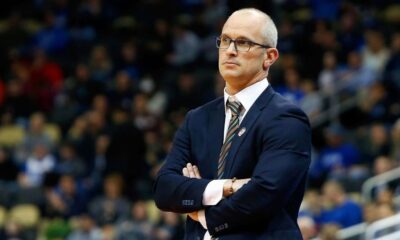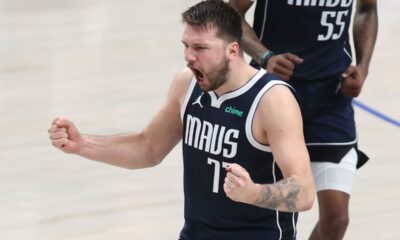
- The NBA trade deadline is coming up soon
- Teams trade every year in February
- A player trade-off always has the championships in the picture
The NBA trade deadline is coming up soon and it is worthwhile stating that not every potential dealer is the same.
A case in point is the Oklahoma City Thunder which has a high probability of ending with the best record in the Western Conference without trading. Dumbfounding enough is the fact that they have the three players aged 25, 22 and 21 respectively. Moreover, The Thunder have the most moveable draft capital of any NBA team and they perfectly encapsulate what big money in a team is.
In contrast, their rivals are facing heightened urgency ahead of Thursday’s trading deadline. Unlike Thunders, some of these teams have older players on their roster, a depressed financial standing and less available assets. All these factors negatively influence their trading. Here are the five teams under insurmountable pressure ahead of Thursday’s deadline.
WHAT IS THE NBA TRADE DEADLINE
February 8, 2024, marks the official NBA trade deadline and there are a handful of teams that are yet to make a move. Teams trade every year in February in a move to strengthen their teams. A player trade-off always has the championships in the picture like in the case of Milwaukee Bucks. They traded for PJ Tucker in 2022 and this booked them a slot in the season’s championships. Below are the clubs beating this deadline.
1. LOS ANGELES LAKERS

Los Angeles Lakers emerged victorious against the Phoenix Suns. Photo/Burn City Sports
The Lakers are in a tricky spot. Their 26-25 record falls short of championship caliber, despite LeBron James’ presence. Trading a valuable first-round pick for a “good starter” seems futile at this point. Even stars like Dejounte Murray wouldn’t transform them into contenders. Deeper issues, like average offense and defense, and the need for a potential coaching change, are also challenging their trading.
The question arises: is it more prudent to use a tradable first-round pick to acquire a quality starter? Or should they wait until the offseason when three picks are available to pursue a potentially superior talent? Waiting for the offseason seems the best option for Lakers in this case.
However, the situation is complicated by LeBron James, the 39-year-old star who is subtly expressing dissatisfaction, notably through tweets. James’ desire for roster improvements adds pressure on the Lakers, and the fear of him leaving presents a legitimate concern. Losing James could mark the end of an era for Lakers basketball.
The challenge for the Lakers is maintaining James’ satisfaction without yielding excessive influence over roster decisions. Striking the right balance is crucial, as veering too far in either direction risks losing the star player. With James turning 40 next season, the Lakers must weigh short-term success against long-term planning. They They must determine whether to take risks for additional postseason opportunities with an aging James or focus on building a post-James future. These intricacies form the pressure of the Los Angeles-based team in the NBA trade deadline.
2. MINNESOTA TIMBERWOLVES
The Timberwolves are currently facing a unique financial challenge, with over $151 million committed to just four players for the upcoming season. That is even before accounting for potential luxury tax implications and impending free agency decisions. This financial pressure makes the current season crucial for Minnesota, as it represents the last opportunity to capitalize on having young talents like Anthony Edwards and Jaden McDaniels on affordable rookie contracts.
Despite these financial constraints, the Timberwolves possess a promising core with Edwards (22), McDaniels (23), and Karl-Anthony Towns (28), suggesting competitiveness for years to come.
The team must carefully navigate the NBA trade deadline to address immediate needs, such as a backup point guard, while considering long-term implications. The delicate balance lies in meeting the current core’s requirements without jeopardizing the potential for a deep playoff run this season. However, the looming uncertainty surrounding ownership’s spending appetite adds complexity to the decision-making process.
3. Golden State Warriors
Despite Golden State Warriors’ historical willingness to endure hefty luxury tax bills, the team faces financial constraints. They currently sit at 21-25 with a payroll exceeding $200 million. The potential departure of Chris Paul and Klay Thompson’s significant contract demands pose dilemmas for the Warriors.
Sadly, Thompson’s declining performance and the team’s inability to rely on long-term payroll relief poses a bigger challenge. The emergence of Jonathan Kuminga complicates matters, as his on-court success may lead to a substantial contract extension.

Klay Thompson and Steph Curry. Photo/ Sports Illustrated.
The Warriors have a reputation for tolerating high taxes during championship-contending seasons. But they are now grappling with the prospect of paying over $400 million, including taxes, for a season where they might not make the playoffs. This raises questions about the team’s willingness to commit such substantial financial resources for a non-contending squad.
4. PHOENIX SUNS
Phoenix Suns has a strategic approach to building a team for the 2024 league but with huge challenges. Acquiring stars like Kevin Durant and Bradley Beal to complement Devin Booker is logical. However, injuries, a lower-than-expected seed in the Western Conference, and the aging of Durant pose concerns. The contrast with younger talents like Nikola Jokic and Anthony Edwards, along with Oklahoma City’s trade flexibility, accentuates the Suns’ current position.
The Suns have gone all-in for the current season, trading away future draft picks and exceeding salary thresholds, indicative of their championship aspirations. They have limited control over their future first-round picks. Financial constraints, and the evolving NBA landscape, particularly with the new Collective Bargaining Agreement (CBA), present significant hurdles.
The CBA restrictions could impede the Suns’ ability to make roster changes post-2023-24 season. That means they will have to stick with a three-star model in the modern NBA.
5. CHICAGO BULLS
Chicago Bulls lacks a clear and ambitious plan. They have a eemingly modest goal of making the play-in without exceeding the luxury tax. The Bulls’ financial decisions are questionable. Take the three-year deal for Nikola Vucevic and the uncertainty around Zach LaVine’s contract.
Further, it has a bigger challenge of retaining players on unfavourable contracts and jeopardizing future draft picks. Eventually, the Bulls could surrender a valuable 2025 first-rounder to the Spurs. Its reluctance to pay the luxury tax may lead to years of irrelevance.
Teresa is a journalist with years of experience in creating web content. She is a wanderlust at heart, but an outgoing sports writer with focus on tennis, athletics, football, motorsports and NBA.













You must be logged in to post a comment Login